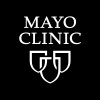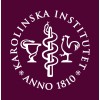
The Change in Vaginal Axis on MRI After Uterus Preserving Laparoscopic Lateral Mesh Suspension
Prolapse GenitalAnatomical Pathological ConditionLaparoscopic lateral mesh suspension is emerged as a practical, safe and feasible alternative to sacropexy to treat female genital apical prolapse. Investigators hypothesized that uterus-preserving lateral suspension provides a better anatomical positioning.

Advanced Biomarker Assessment in Pelvic Organ Prolapse
Pelvic Organ ProlapseThis study will assess advanced biomarkers in patients with and without vaginal prolapse. Assessments will be directed at vaginal fibroblasts and adipose derived stem cells.

Comparison of PHVP of Different VTH Methods
Vault ProlapseVaginalTo evaluate the post-hysterectomy vault prolapse (PHVP) rates performed using different methods of vaginal total hysterectomy (VTH).

Operative Mitral Valve Reconstruction in Functional mv Insufficiency With Reduced Systolic Ventricle...
Mitral Valve InsufficiencyLeft Ventricular Systolic Dysfunction1 moreFunctional mitral insufficiency poses a challenge with regard to the optimal time of intervention, particularly because they are frequently associated with left ventricular (LV) dilation and reduced LV ejection fraction (EF). The registry will document the underlying pathology by using transthoracal echo cardiography (TTE) with analysis of common tenting parameters. OP strategies, data and outcomes will be documented, as well as follow-up data for echocardiography, quality of life and MACCE outcomes after 6 months, 1 and 2 years.

Vaginally Assisted Laparoscopic Hysteropexy Versus Vaginal Hysterectomy
Pelvic Organ ProlapseUtero-vaginal prolapse is a common, often disabling, condition experienced by women of varying ages. The traditional surgical treatment for utero-vaginal prolapse often includes vaginal hysterectomy and anterior or posterior colporrhaphy. Growing emphasis on patient-centered medicine and patient-generated definitions of surgical success has resulted in reassessment of uterine preservation versus hysterectomy at the time of apical POP repair. Various techniques have been described for uterine preserving prolapse surgery, which may include vaginal sacrospinous hysteropexy, transvaginal mesh kits, abdominal sacrohysteropexy using mesh and laparoscopic uterine suspension using sling or mesh. A modified form of uterine-preserving prolapse surgery using a combined vaginal and laparoscopic approach was introduced and a series of 70 women was reported. To date, there have been no randomized studies comparing the outcomes of vaginal assisted laparoscopic uterine suspension (hysteropexy) with conventional vaginal hysterectomy. Women attending the gynecology clinic at a tertiary referral urogynecology unit in tertiary referral training and research hospital requesting surgical treatment for STAGE 2-4 symptomatic uterine prolapse will be offered participation in a randomized trial, over a 2-year period. Subjects participating in the study were randomly assigned to either of two groups: Group A, Vaginally Assisted Laparoscopic Hysteropexy (VALH), or Group B, Vaginal Hysterectomy and Mc Call Culdoplasty (VH + Mc Call).1 year following surgery, vaginal prolapse will be assessed again using the International Consultation on Incontinence Questionnaire for Vaginal Symptoms (ICIQ-VS) questionnaire and the Pelvic Organ Prolapse -Quantification (POP-Q) examination by another researcher then the operator.

Is Preoperative Urodynamics Essential for Women With Pelvic Organ Prolapse
Urogenital Prolapseurodynamic investigation when added in the diagnostic work-up of women with lower urinary tract dysfunction with POP is debatable. This study was planned to determine the usefulness of preoperative urodynamic study in improving urological outcome following surgery in women with pelvic organ prolapse and urinary tract dysfunction.

Vaginal Microbiota as a Decisive Factor in Vaginal Prosthetic Surgery
Pelvic Organ ProlapseRetrospective analysis of vaginal microbiota in the post-operative course of patient operated for genital prolapse with vaginal mesh with or without mesh related complication

Comparison of Single Versus Multicenter Outcomes for Pelvic Organ Prolapse Repair Using a Mesh-capturing...
Prolapse GenitalComparison of single versus multicenter outcomes for pelvic organ prolapse repair using a mesh-capturing device (The Uphold™ Vaginal Support System for apical and vaginal wall prolapse - Boston Scientific). 1-2 years follow up study comprison of 112 vs 207 patients.

Restorelle Direct Fix Anterior and Posterior (A&P) for Female Pelvic Organ Prolapse: A Prospective...
Pelvic Organ Prolapse (POP)This is a prospective, multi-center study designed to assess the palpability of the Restorelle Direct Fix A&P mesh after vaginal reconstruction surgery.

Development Study Using Vaginal Tactile Imager
Pelvic Organ ProlapseThe objective is to evaluate and optimize tactile imaging technology in evaluation of tissue elasticity parameters in the female pelvis.
